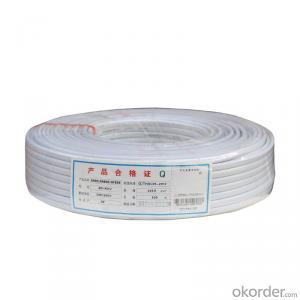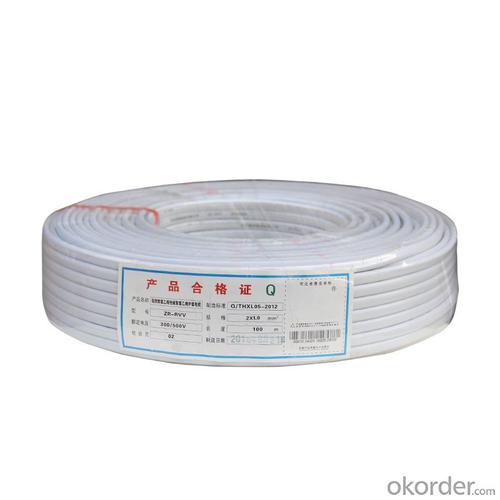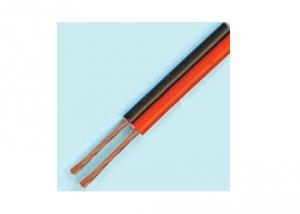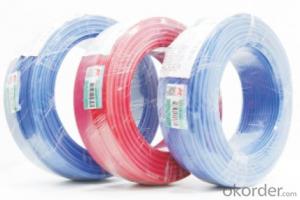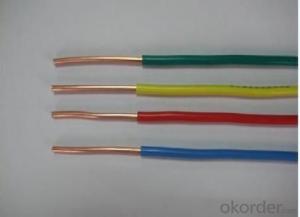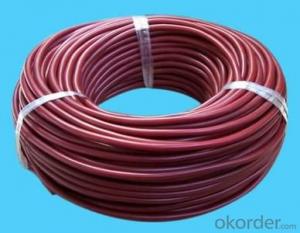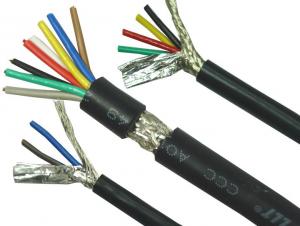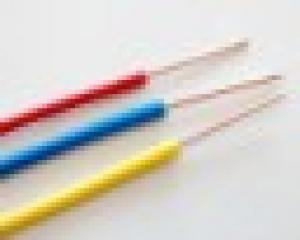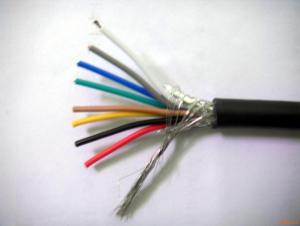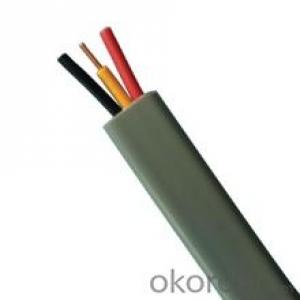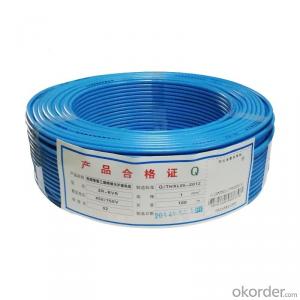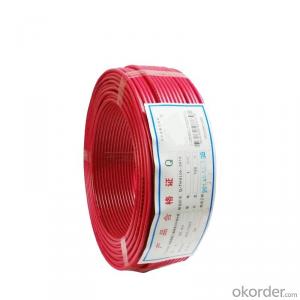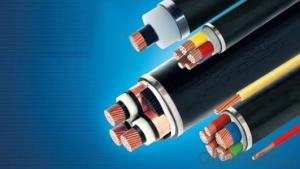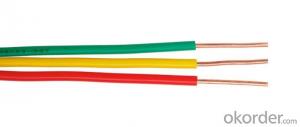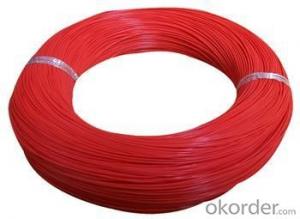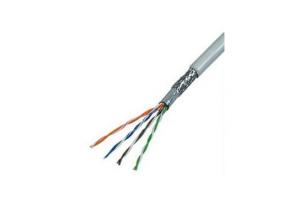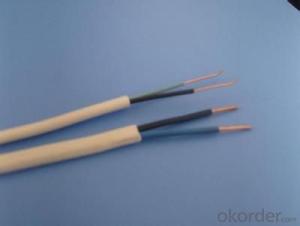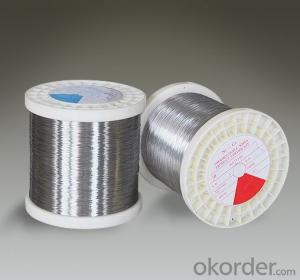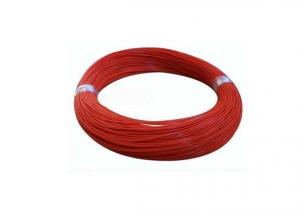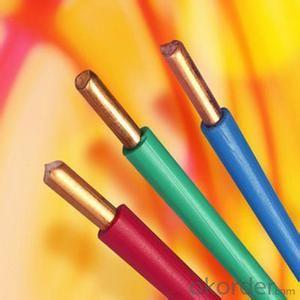Cu/PVC/PVC Flexible Copper Conductor PVC Insulated PVC Jacket Eletric Wire
- Loading Port:
- Tianjin
- Payment Terms:
- TT OR LC
- Min Order Qty:
- 1000 reel
- Supply Capability:
- 10000 reel/month
OKorder Service Pledge
OKorder Financial Service
You Might Also Like
RVV IEC60227
Product information
Conductor
Plain annealedcopper, Class 5 stranded circular or compacted
Insulation
Polyvinyl chloride(PVC) Compound type D
Outer sheath:
Polyvinyl chloride(PVC) Compound type ST5
Temperature rating
Maximum 70ºC
Rated voltage
450/750 V
Application
Suitable for power installations, household appliances,instrumentation and communication devices
a. Use as home appliance wiring cable, building wire
b. Use as electrical and electronic equipment internal connecting wire
c. Use as lighting wire
d. House wiring cable
| Type | No. of Cores | Corss Area ( mm2) | NO.of wire & diameter | Insulation thickness mm | Outer diameter mm | Weight kg/km |
| BV Cu/PVC -Solid | 1 | 1 | 1/1.13 | 0.7 | 15.73 | |
| 1 | 1.5 | 1/1.38 | 0.7 | 22.12 | ||
| 1 | 2.5 | 1/1.78 | 0.8 | 32.75 | ||
| 1 | 4 | 1/2.25 | 0.8 | 48.73 | ||
| 1 | 6 | 1/2.76 | 0.8 | 69.15 | ||
| BVR Cu/PVC-Strand | 1 | 1 | 7/0.43 | 0.7 | 16.9 | |
| 1 | 1.5 | 7/0.52 | 0.7 | 22.71 | ||
| 1 | 2.5 | 19/0.41 | 0.8 | 34.21 | ||
| 1 | 4 | 19/0.52 | 0.8 | 49 | ||
| 1 | 6 | 19/0.63 | 0.8 | 70.9 | ||
| RVV Cu/PVC/PVC -Flexible | 2 | 1 | 32/0.2 | 0.7 | 52.3 | |
| 2 | 1.5 | 48/0.2 | 0.7 | 70.45 | ||
| 2 | 2.5 | 78/0.2 | 0.8 | 103.75 | ||
| 2 | 4 | 127/0.2 | 0.8 | 147.2 | ||
| 3 | 1 | 32/0.2 | 0.7 | 96.45 | ||
| 3 | 1.5 | 48/0.2 | 0.7 | 133.73 | ||
| 3 | 2.5 | 78/0.2 | 0.8 | 180.63 | ||
| RVS Cu/PVC/ -Flexible | 2 | 0.75 | 37/0.16 | 0.7 | 29.73 | |
| 2 | 1 | 32/0.2 | 0.7 | 36.8 | ||
| 2 | 1.5 | 48/0.2 | 0.7 | 47.45 | ||
| 2 | 2.5 | 78/0.2 | 0.8 | 70.25 |
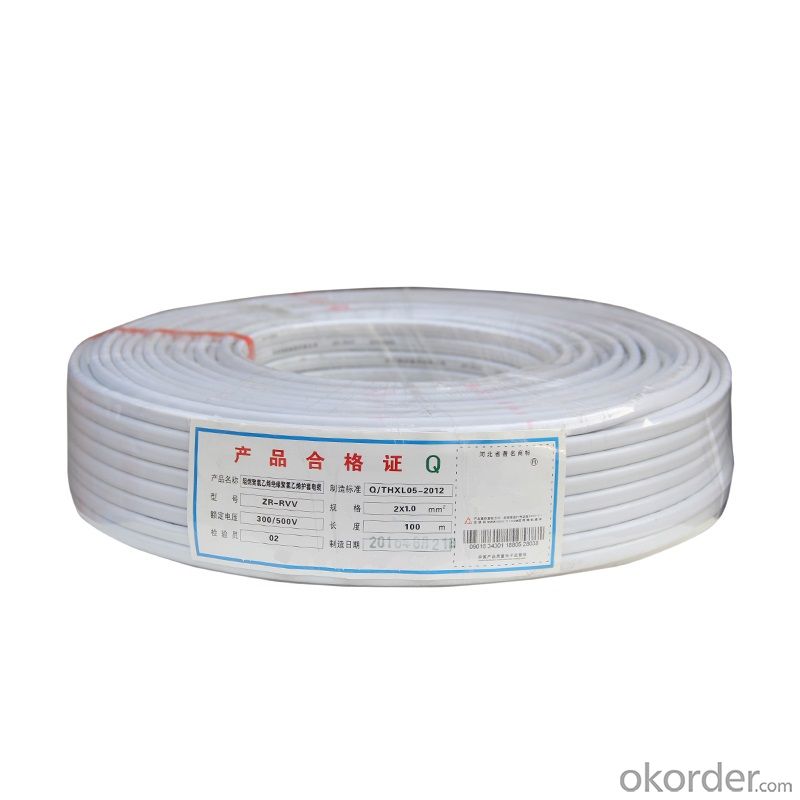
- Q: What is the meaning of SC15WCCC to SCE in electrical drawings?
- to determine the direction: According to the building layout plan, combined with air conditioning lines and electrical pipelines and other settings, easy maintenance, and cable routing to determine the cable bridge the best route
- Q: above the homes?We are thinking of buying a lot in an older area of town (appealing to us), but I've noticed these wires which seem to clutter the view. And I wonder if they present some dangers to consider. Are such wires underground in newer areas?
- that they can fall from ice, trees, etc the jury is still out about whether there's a health risk if they're high voltage. Main transmission lines, that are typically 100,000 volts or higher, have a rather large elctromagnetic field around them - large enough to penetrate a person standing below or near the lines. There's no definitive answer as to whether they will effect the human body in some negative way but there is anectdotal evidence that it does (cancer, for example). If you don't mind the asthetics of overhead wires and still want to live there, you can check with the local power company to find out what the voltage is (the higher the voltage, the larger the magnetic field). You can also check the area where you plan to live with a gaussmeter. That'll show your exposure to the expanding and collapsing field relative to anywhere else. Armed with that, you can go online and do a little detective to get an idea of what you'd be exposing yourself to day in and day out.
- Q: I have an electrical box with 3 on off switches in it, 1 comes in from a ceiling light (it will be the only switch for it), the second will run to another separate ceiling light and also continue to another switch, and the third will run to an outlet which I want to be able to turn off and on with the switch for a table lamp.Starting at the power source coming into the box how should the rest be wired to work independentlyThanks
- If it is 3 single pole switches all fed hot from that box then you would just pigtail 3 hot wires from your constant hot feed and go to all three switches and then each black wire from your lights will tie to the other lugs on your 3 switches. All whites tie together and wire nut and all grounds twist together and tie to the green lug on your switches.
- Q: I have strange wiring in my bathroom that I am trying to figure out and get working again. I have a two conductor with ground going into my fixture carrying the feed, then a three conductor with ground going to the switch. From the switch, there is a black wire jumped to the switch beside it(for the fan), then to the receptacle beside that. The white from the 3 conductor is going into the receptacle, the red and black into the switch for the light. Then there is a two conductor for the fan, with the black to the fan switch and a white to the receptacle. I have changed the two switches and matched them exactly as they were before, and changed the receptacle for a GFI. I neglected to write down how it is connected at the light fixture, so I am afraid to connect it wrong at that point. What is the correct way to hook this up?
- check this out go to web site listed below for all your wiring needs, printable diagrams,step by step instructions, they offer everything and its free click on the category that suits your needs and your on your way
- Q: I have an oven with a 4 prong plug. I bought a 4 prong plug for the wall outlet because someone had the old oven hardwired in. The wire comming out of the wall has only 3 wires in it a white black and ground how can i make it work with the 4 prong plug box I have?
- Download the owners manual for the range and follow the instructions to install a 3 wire cord. It is not legal to install a 4 wire receptacle where only 3 wires are present. The NEC used to allow combining the ground and neutral in most residential installations, it no longer allow new installs of this style, but allows existing to remain. Your range and dryer will need to have a jumper wire or grounding strap connecting the neutral center prong to the frame.
- Q: How to identify the quality of the wire is good or bad!
- In addition to heat, it is possible to reduce the line power factor and increase the pressure drop.
- Q: I had a space heater on in a bedroom. I know, dumb idea, but it was plugged in to a power strip, which was plugged into a standard outlet. It was on for about 30 minutes. Then, it just shut off. I thought nothing of it, but when i unplugged the heater and later tried to plug other things into the power strip, the light on the power strip was on (the one that is always on if the strip is getting power), but nothing plugged in would work, even after resetting it. My house s circuit breaker did not trip. After unplugging the power strip, the outlet still works if I plug somethig in. This is probably insanely paranoid of me, but could this cause damage to my home s electrical wiring? Could this cause an electrical fire after everything has been unplugged?Thank you.
- Yes space heaters can. it isn't common but may be possible. Surge protectors aren't extention cords they are a device to protect electronic devices from an electrical over charge or surge. So under high wattage use will fry the electrical connections in the protector. That's probably what happened here. Other times they can catch fire and maybe a small explosion. The largest electric space heaters are around 1500w and draw about 12 amps. Most home outlets are rated at 15A or even 20A. So in good working order most heaters won't hurt an outlet or wiring if that is the only thing on that breaker. If things do go higher the breaker should trip and cut power. If the breaker is old or damaged it may not trip and then somethings gotta give next either the outlet or the wiring normally it's the plug but if two things on two plugs the wire may catch fire. also don't use cheap extention cords they will catch fire you can use extention cords but rated at least 14G for 15A or 12G for 20A.
- Q: I am moving a sub panel from one position to another but the feed wires #2 are not long enough to reach new panel so i want to know if I can make a j box and splice them and what would i use as wire nuts are to small.
- Ilsco Clear Taps
- Q: i have a wired xbox 360 controller and it had a shortage in it . so i fix the shortage now the controller wont come on.i got me a new usb breakaway cord and it still wont work.how do i fix it without buying a new one
- well depends on how you shorted it out now this works for a lot of corded things like keyboard wires electrical wires your gonna want to go to the inside of the wire where there shood be three wires positive negative and copper if any of these are damaged in the slightest your gonna want cut the wire in half and take their inner wires and twist both ends of the cut wire and twist them together and wrap electrical tape around them do this for each wire now only do this if an other process dosnt work or your desperate granted it does work i personally have done this with electrical cords mouse wires printer wires this process will get the electrical current flowing again so this may work with you corded controller again depends on what you did to short it out now here's the simple answer it may jus be old all controllers have an expiration date in some way hoped i helped
- Q: If I had a 2D shape like a star bent from a single length of wire, how could I 'electrify' it - i.e. pass an electric current through it? I assume that I can't just join the ends straight to the 1.5v battery.I am trying to create a magnetic field and wonder what shape it would have. Would it matter if the wire touched itself as it kept crossing over itself?
- They make TVs just for Hotels. But as for security, usually a wall mounted with a pull down feature. The wall mount will be bolted to the back of the unit. Cant fit a socket and ratchet/hand back there to unbolt it. Swivel it down to unbolt it but having a lock built in or put a lock in a place where it will jam it tryed to be swiveled.
Send your message to us
Cu/PVC/PVC Flexible Copper Conductor PVC Insulated PVC Jacket Eletric Wire
- Loading Port:
- Tianjin
- Payment Terms:
- TT OR LC
- Min Order Qty:
- 1000 reel
- Supply Capability:
- 10000 reel/month
OKorder Service Pledge
OKorder Financial Service
Similar products
Hot products
Hot Searches
